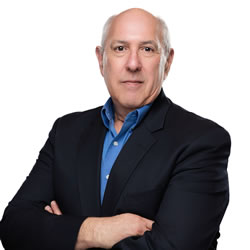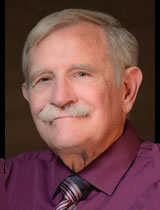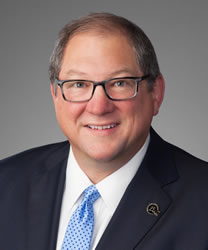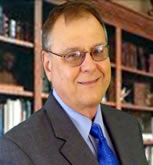Rarely are clients immediately aware of the wrongful or erroneous actions of the "professional" they trusted to perform specific duties or services; mainly because "professional" acts or errors do not or only seldom cause immediate injury. A "professional's" wrongful acts or errors may not manifest in client injury until long after the act is perpetrated or the error is committed.
Because of the time lag between the wrongful act or error, the resulting injury and the ultimate claim or lawsuit, Joe D'Alessandro in 1964 deduced that there was a better way to insure a "professional." Secondarily, D'Alessandro postulated that there had to be a way to provide greater actuarial certainty that there would be no further claim activity following the close of the policy period (eliminating the "incurred but not reported" (IBNR) problem). This creative thinking led to the development of the first "claims made" policy wording.
While D'Alessandro's initial thinking was accurate, 45 years of history has shown the goal of achieving actuarial certainty to be elusive at best. The stability and evolution of the "claims made" policy has also been threatened during its history by poor form standardization, court decisions and shoddy policy form draftsmanship.
Profession/Professional Defined
"Claims made" coverage originated in the realm of professional liability. To understand the exposure and the reason for the desire to limit or eliminate the long-tail claim problems, "profession" and "professional" must first be defined.
A "profession" is a calling that requires specialized knowledge, has legal and/or educational barriers to entry, requires the practitioner to be dedicated to the vocation itself and necessitates a commitment to continual study and the increase in applied knowledge. This intimates focused attention on the profession's depth and details and surrendering to the fact that the well of the profession's knowledge is infinitely deep and is not adequately explored shy of ongoing, personal study.
"Professionals" accept the challenges of the profession's calling, dedicating themselves to studying and understanding the chosen industry, the industry's clients and the mechanism. Receiving pay does not make one a professional, only the result of an individual's membership in a profession.
Professions in antiquity included those that practiced medicine, law, the clergy and engineering. The modern definition of "profession" has been expanded to include architects, investment managers, insurance agents, accountants and others s meeting the above definition who "provide services to others for a fee".
Since its creation, "claims made" wording's use has expanded outside of the "profession" and professional liability realm, finding use in diverse liability coverages. But the roots of "claims made" wording, and its most common use still, is found in covering the exposures created by a "professional's" activities. As seen by the list of true "professions," professionals are individuals who provide a service to society which, if done poorly, could cause extreme or irreparable personal or financial harm.
Expanded Use of the Claims Made Concept - Two Branches
The expansion of claims made policy forms beyond "professions" caused the basic "claims made" concept to diverge and evolve into two distinct forms. One evolutionary branch commenced in professional liability coverages (known also as "errors and omissions" coverages in this series) and the second branch grew out of the financial services industry and the need for directors and officers liability protection, fiduciary liability and employment practices liability (referred throughout this series as "executive liability" coverages).
Although both branches attach to the tree at the same point; greatly different "claims made triggers" have resulted. Additionally, coverage terms, conditions and definitions differ between the two branches.
Developing "Claims Made" and the Problems Defining a "Claim"
"Claims made" policies were designed around a simple idea, "to indemnify for claims first made against the insured during the policy period." This original language has since become known as a "pure claims made" form. There was only one event needed to trigger coverage: a "claim was first made during the policy term." The current complexity evolved from this starting point!
The first problem to arise following the development of this form was the exact definition of a "claim." "Claim" took on more meanings than ever imagined and its use became abused and confused depending on context. Was a claim "first made" when the insured received an angry phone call threatening to sue and/or hold him/her responsible? Was it not until the insured received a demand letter threatening suit; the filing of a complaint or the receipt of the suit papers? Each of these events likely takes place on different dates; this disparity of dates could have profound effect on coverage depending on when coverage incepted or renewed and how "claim" is defined.
Courts wrested with the definition of a "claim" and rendered decisions making the definition and any attempt to narrow it down to one point even more complex. Many of these court-developed definitions actually made things worse. Most current forms specifically define "claim;" and the definitions can be as varied as the carriers that provide coverage (the differences are highlighted in the last post). Forms must be compared to know when a "claim" occurs; the "when" makes a difference since the carrier has to be informed during the policy period to ensure that coverage exists (this necessity and the danger of not meeting this requirement is highlighted in future paragraphs).
Correcting the Perception of Pricing Inequities - Creation of the Prior Acts Date
By 1976, "claims made" policies and the number of carriers offering them flourished. No longer would a professional have to keep boxes of "occurrence form" policies around should an error give rise to a claim, even years after the end of the policy period. But the new form led to pricing questions.
Consider two professionals with the same practice and similar revenues. The first insured has carried a "claims made" policy for several years and is preparing for renewal; the second is buying its first "claims made" policy - and their premiums are - the same.
. . .Continue to read rest of article (PDF).











